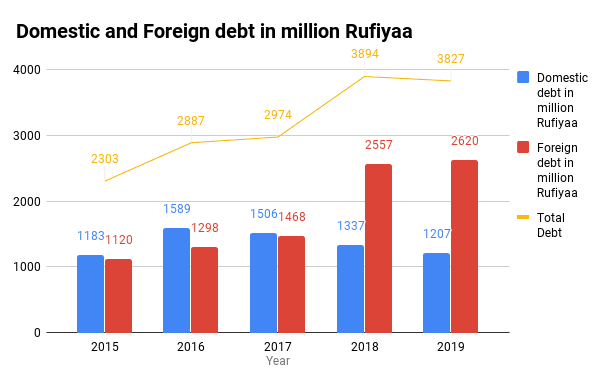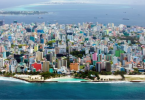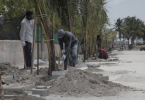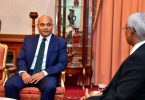The original Dhivehi article was published on Avas.mv website on 11th October 2017.
The following is a loose translation:
In contrast to neighbouring countries, Maldives economy is small. The income generating resources are also less. The entire economy is dependent on tourism. Therefore, in order to broaden the economy, the government started several initiatives. Likewise, loans were taken from several different foreign financial institutions. So the question is – does the Maldives have the capacity to repay all these debts?
‘The current investment in the Maldives are areas that will contribute to the growth of Maldives GDP, which is acknowledged by the World Bank and IMF,’ said Fisheries Minister Dr Mohamed Shainee.
While there are mega projects financed through loans, the largest project is Velana International Airport (VIA) development project. Additionally, there are Hulhumalé city’s second-phase development project and China – Maldives Friendship Bridge project. For all these development projects, 997 million Rufiyaa was estimated to be spent through loans last year. And this year it is estimated that the expenditure will rise to 2.8 billion Rufiyaa. VIA’s development cost comes to a large USD 800 million.
‘The current investment in the Maldives are areas that will contribute to the growth of Maldives GDP, which is acknowledged by the World Bank and IMF,’ – Fisheries Minister Dr Mohamed Shainee.
This project is undertaken by massive loans. Foreign Financial Institutions like Saudi Fund for Development, Abu Dhabi Fund, Opec Fund for International Development (OFID) are amongst them. 39% of the loans are spent on these projects. As per the estimated budget for this year, the majority of the foreign debt will be sourced from foreign financial institutions.
The government said after the development of VIA, the economy will enjoy a considerable change. The government believes that when VIA is extended to increase its capacity to 7 million international passengers, it will result in huge economic growth.

The other question is – how do we come up with the money to pay back the loans for these projects? And as government previously said, what results has been achieved among the plans to increase the public income?
In the current budget, some areas have been identified as income receivables. Similarly, for the past 2 years, Special Economic Zone (SEZ) had been declared in the budget as a huge income generator. Furthermore, under SEZ investments, Acquisition Cost of 500 million Rufiyaa, Land Ownership 500 million Rufiyaa and from Malé city areas a Concession Charge of 261 million Rufiyaa had been declared. However, none of these has seen a light of day.
Despite that, the government said the current loan is a crucial loan taken at the right time. And the government gives the full guarantee to repay back the loan. Likewise, the government said that in 2015, 2.3 billion Rufiyaa was repaid. It was also declared in the budget, that when 2.8 billion Rufiyaa was spent on repaying loans last year, 2.9 billion Rufiyaa will be repaid this year.
Regardless, the year is almost over. The question is, whether all these loans taken for projects can be repaid? We will definitely know the answer to this when the projects are completed.







